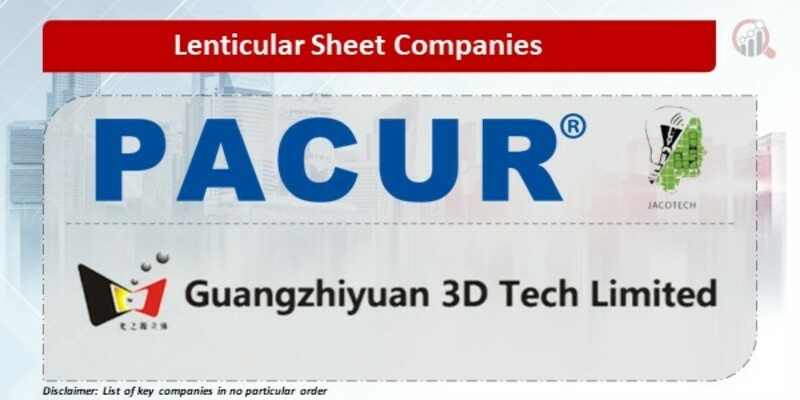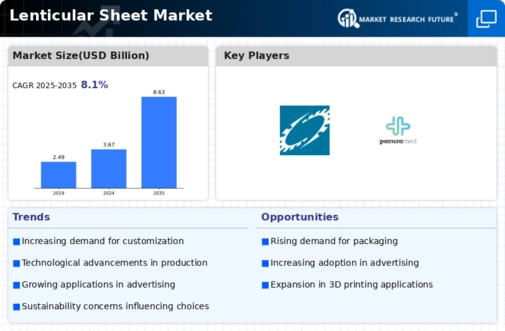Top Industry Leaders in the Lenticular Sheet Market
 The lenticular sheet market, renowned for its captivating 3D illusions and dynamic visuals, is experiencing a growth trajectory fueled by diverse applications. Understanding its competitive landscape, key strategies, market share drivers, recent news, and developments empowers informed decisions for players within this evolving arena.
The lenticular sheet market, renowned for its captivating 3D illusions and dynamic visuals, is experiencing a growth trajectory fueled by diverse applications. Understanding its competitive landscape, key strategies, market share drivers, recent news, and developments empowers informed decisions for players within this evolving arena.
Competitive Landscape:
The market features a blend of established manufacturers and innovative newcomers navigating various strategies to secure their positions:
-
Product diversification: Expanding offerings beyond traditional plastic sheets to include eco-friendly materials and specialized functionalities. -
Technological advancements: Investing in high-precision printing techniques, lenticule design software, and automation for improved image quality and production efficiency. -
Strategic partnerships: Collaborating with brands, designers, and printing houses to cater to specific application needs and broaden market reach. -
Geographical expansion: Establishing production facilities and distribution networks in emerging markets with high growth potential. -
Sustainability focus: Integrating environmentally friendly materials and production processes to meet customer demands and regulatory requirements.
Factors Fueling Market Share:
-
Technological capabilities: Ability to manufacture high-quality lenticular sheets with intricate designs and smooth transitions. -
Production capacity and cost-effectiveness: Balancing scalability with efficient use of resources to meet demand at competitive prices. -
Product innovation: Offering unique features and functionalities that address specific customer needs and application requirements. -
Marketing and branding: Building strong brand recognition and effectively communicating the value proposition of lenticular technology. -
Distribution network and customer service: Ensuring widespread availability and providing prompt, reliable support to clients.
Key Players
- Micro Lens Technology
- JacoTech
- Pacur
- Hangzhou Donghuang Chemical
- Chengdu Kanglongxin Plastic
- Jiangmen Guangzhiyuan 3D Technology
Recent Developments
-
August 2023:- Integration of augmented reality (AR) with lenticular displays for interactive experiences.
- Rising demand for lenticular sheets in educational materials for enhanced learning engagement.
-
September 2023:- Development of lenticular displays with haptic feedback for multi-sensory experiences.
- Increased adoption of lenticular packaging for luxury goods and brand differentiation.
-
October 2023:- Exploration of lenticular technology for automotive dashboards and heads-up displays (HUDs).
- Focus on personalization and customization of lenticular products for individual customer preferences.
-
November 2023:- Research on biodegradable and compostable lenticular materials for environmental sustainability.
- Continued expansion of online marketplaces for lenticular sheet printing and design services.
-
December 2023:- Growing interest in lenticular technology for advertising and marketing campaigns with high visual impact.
- Collaboration between lenticular sheet manufacturers and designers to create unique and eye-catching displays.










